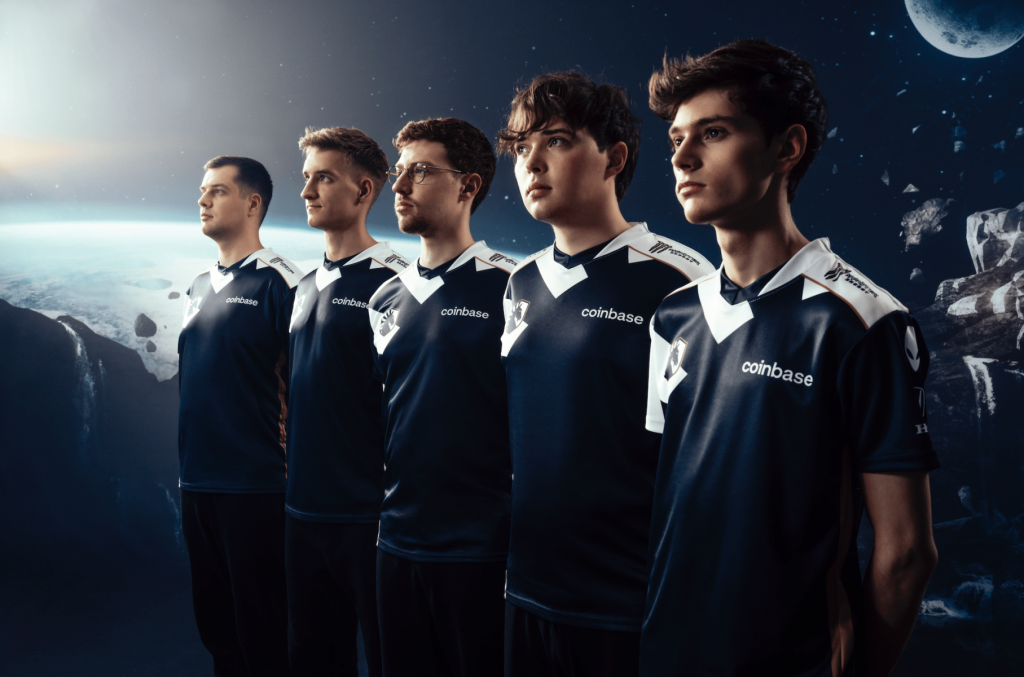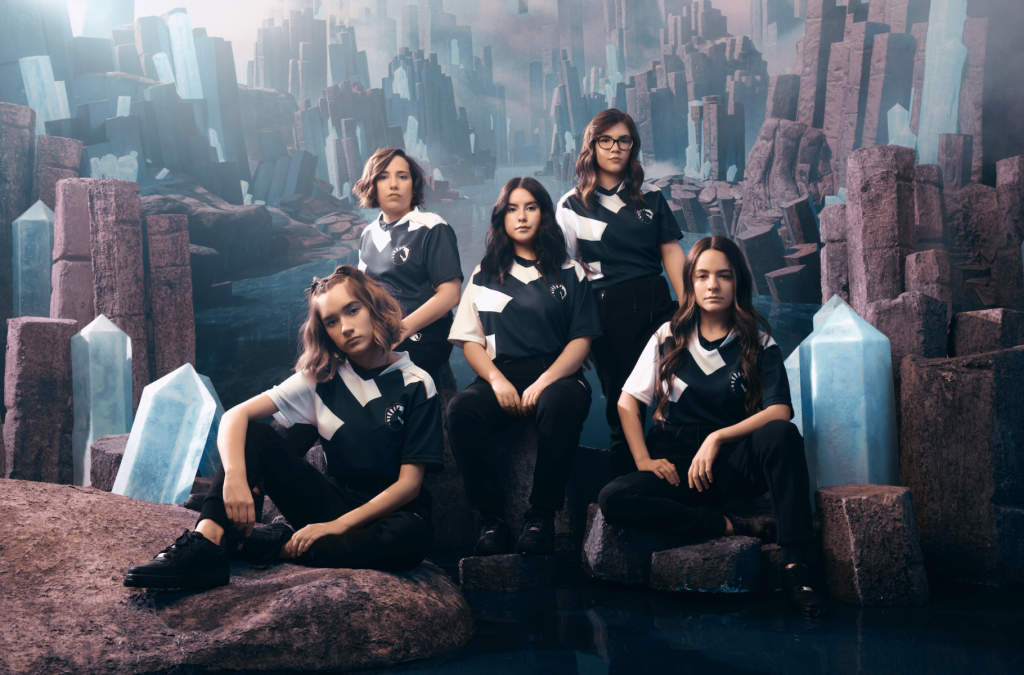
Creating meaningful fanbases is paramount to long-term success for traditional sports clubs. Yet when it comes to esports, many fans prefer to support certain players, and their bonds to the organisation they play for are fleeting at best.
This is not a surprising revelation. Due to esports’ short history and digital nature, there are few lifelong fans, and most organisations don’t have the benefit of intrinsic ties to geographic locations that typically forge the bonds in traditional sports. Converting fans of players into fans of their organisation is a key part of the esports puzzle. But how does an organisation do that in an industry made up of numerous titles and disparate fandoms?
For Team Liquid, the answer is marketing. Or, more precisely, ‘Wave of One’, a marketing campaign that aims to unite its competitive rosters and fandoms. Team Liquid is of course no stranger to marketing, having grown from its humble Dutch origins 22 years ago into a global esports powerhouse.
Now, Wave of One is its ambitious plan to consolidate its global reach into one long-lasting, unified fanbase. Team Liquid’s Josie Brown, SVP of Brand, Content and Marketing, provided two answers as to why it’d work. “I’ll start with the technical elements. When I observe our marketing funnel, I can see that we have fans of not just the team but also individual players and individual creators.
“If those people then move on, we have an opportunity to keep that fan, to keep them in the funnel and keep them as a fan of Team Liquid. It’s really on us as marketers to figure out what is the most motivating way we can hold on to their support.”
The second answer, which Brown described as the ‘more human answer’, is quite simple. “We’re looking for people to love us. It’s just a very human truth that if you want people to love you, you have to love them back. This is our love letter to our fans.”
Still, it’s important to ask why cross-division synergy is important. Enamouring people to the organisation is one thing. But as esports expands, it’s crucial to maintain an identity. With new titles being introduced and esports organisations delving into different games, opportunities arise — as do more challenges.
“You can see that we’re in 18 different games and that hits a lot of people, but nothing really connects them,” said Brown.
“There’s obviously the risk of if you step out of a game, or if players move around, or creators move around, can you keep their fans with you? It’s a marketing problem. It’s a business problem. I came into marketing in order to solve those sorts of business problems in fun ways and I think a Wave of One gives us that opportunity.”

For Brown, the idea of bringing fandoms together holds huge promise; the question is how to execute it. Wave of One is Team Liquid’s first attempt at trying to solve this question. By creating a synergised campaign — featuring a video highlighting Team Liquid’s rosters — the hope is that it will connect the teams together using water as a recurring theme.
“We wanted everyone to feel like they were part of Team Liquid, and that we were, a rising tide together that was working always towards the same goal, which is ultimately Team Liquid success.”
Trying to combine, or at least synergise, different fandoms across titles can be a very risky play. It runs the risk of stripping away some of the character and culture inherent to each fandom, as well as the uniqueness of each roster. For example, Team Liquid’s competitive rosters, while under the same banner, share different stories. Perhaps most notable is the organisation’s VALORANT and League of Legends teams this year — one tells the story of a European wildcard, the other a North American ‘super team’.
“One sort of generalised campaign across isn’t always gonna play off the details and the little aspects of the fandom that are so important to individual games.” Brown said. “This is why we made sure to also not just have the anime piece, but also the individual photographic shoots, which are of the teams, or the individuals, themselves in backdrops that were connected to the games.”
Choosing which rosters would be featured in the campaign was also an incredibly difficult decision, according to Brown. It was decided that Team Liquid would utilise its largest games, and “obviously Starcraft” due to its place in the organisation’s history. Ultimately, Liquid settled on seven rosters, with its Brazilian VALORANT Game Changers team, European Dota 2 roster and its LCS League of Legends team all featured.
“I think we did a really good job because, not only did we want to show the diversity across the games, we wanted to show the diversity across the players,” she said. “We wanted to give that sort of universal appeal to people, no matter which country or culture they come from, men and women. It was a task to get it right.”
These are messages that can be spread across all of Team Liquid’s divisions. By utilising the overarching ethos of an organisation, it creates synergy that can be used to relate people to the organisation, no matter what title they primarily reside in.
“I think the community as a whole is really powerful together,” said Brown.
“We talk a lot about our integrity, and pursuing excellence and myth and mastering news momentum, all these things that mean a lot to us, I think they resonate across the community.”
Anime culture was another defining factor in the campaign, highlighting the growing relationship between the two forms of entertainment. Brown admits that utilising anime for the Wave of One promotional video was one of the first decisions they made. Whether it’s through merchandise collaborations or marketing campaigns, the so-called ‘animesports’ crossover is being leveraged in esports as a great tool to connect multiple fanbases.
Brown described the marketing campaign as a monumental task for the organisation. Team Liquid’s new SVP joined the organisation earlier this year after a notable tenure with Hulu, and being a self-employed consultant. This was in fact one of Brown’s first major campaigns for Team Liquid. “I jumped onto it thinking ‘Oh, this is gonna be great. It’s gonna be a really awesome Capstone piece for me to jump into this industry with’. Little did I know, rosters change.”
If doing a photoshoot, video and marketing campaign wasn’t enough, Team Liquid also launched a new YouTube channel alongside the project that focuses on the organisation, instead of its specific rosters.
Overall, Brown claimed Wave of One has so far been a success “Brand pieces are so anthemic. They’re not really made to go viral. They’re made to make a statement and I think we did that.”
The campaign comes at a time when organisations are starting to lean heavily into the content creation and influencer space and arguably away from a pure competitive focus — a thorny choice for Team Liquid, which has fostered a performance-focused reputation.
However, Brown teased that there’s more in the pipeline for Team Liquid from a marketing standpoint, both with the Wave of One campaign as well as other initiatives.
“We recognise that a lot of the rest of the industry has moved into the creative space. So for us, we have had the really big task of defining what does it mean for Team Liquid to go into the creative space?
“That’s been a bit of a puzzle to sort of solve. And I think in the coming months, you will see exactly how we’ve decided to solve that.”
As esports evolves, matures and changes as it gets pulled in different directions by its growth, retaining fans is crucial. A multitude of organisations of all sizes are looking to develop brands and establish a name for themselves outside of the players they have signed. The multinational organisation has even launched a new YouTube channel alongside the campaign that focuses on the organisation instead of its specific rosters.
For Team Liquid, Wave of One is just the start of its attempt to bring together its various divisions under a united banner, whilst still retaining the uniqueness that each title, and fanbase, has created.




